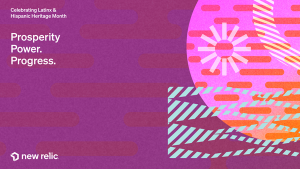
When we talk about diversity in tech, people with disabilities are often overlooked. Many tech companies don’t even include disability in their public diversity reporting. This is a huge missed opportunity considering the fact that 1 in 4 Americans has a disability. In fact, people with disabilities in the United States are underrepresented across the board when it comes to employment. According to the U.S. Bureau of Labor Statistics, 70% of people without disabilities between the age of 16 and 64 are employed while just 29.1% of people with disabilities are.
I was born deaf, though I often introduce myself as hard-of-hearing because people get confused if I tell them I’m deaf but can still hear (with assistive devices). However, I identify as deaf. Hard-of-hearing is a label that focuses on what I’m not (hearing) while deaf is a label that I can proudly use to identify who I am.
There’s a superhero trope where people with disabilities compensate for their disabilities with superpowers. It’s an unfortunate trope because the underlying message is that disability is something that needs to be fixed or compensated for. There should be no need for people with disabilities to overcompensate to level the playing field with able-bodied people. We all have our strengths and weaknesses. And while I don’t have superpowers, I’ve had to make many adaptations. I’ve had to evolve in order to succeed and fit into a world that mostly consists of hearing people. And many of these adaptations have had a dramatic and positive impact on my skill set.
Here’s an example: I read lips to communicate—but only about 30% of speech in English can actually be lipread. An excellent lip-reader is kind of like a human Mad Libs machine, filling in the blanks and putting together the puzzle of language on the fly. This adaptation has been necessary for me to thrive in a world built for hearing people. However, I’m convinced that a lifetime of using this skill has made me a better writer and communicator, able to anticipate and solve problems on the fly. It’s just one way being deaf has helped me build other strengths and develop a unique perspective.
Don’t think of people with disabilities as being a problem for your team. People with disabilities are problem solvers. The problem isn’t the disability—the problem is the user interface. On websites, the user interface is what users interact with—but the real world also has a user interface, too, whether it’s the buildings we interact with or the transportation we take to get around. More than thirty years after the passage of the Americans with Disabilities Act (ADA), we still have a long way to go in terms of providing accessibility and opportunity to people with disabilities. So people with disabilities spend their lives problem-solving a finicky user interface, creating workarounds and solutions in order to get by. And if there’s any one skill that’s valued above all others in the tech industry, it’s problem-solving.
The benefits of having diverse teams are tremendous. Teams that include people of color, women, LGBTQI+, and yes, people with disabilities, are more robust, resilient, and creative. Greater creativity is a result of bringing many different perspectives to the table to solve problems. And considering that 1 in 4 Americans has a disability, it’s absolutely essential that you have employees within the organization that understand the perspective of a significant cross-section of potential customers.
Unfortunately, conversations about diversity in tech often leave out people with disabilities. As an example, a prominent organization I've worked with has a diversity pledge that mentions women and people of color—but not people with disabilities or LGBTQI+ individuals. I have had discussions with this organization about including other underrepresented groups in the pledge statement, and while the organization has been receptive to my suggestions, the pledge still isn’t truly inclusive—even years after I provided my original feedback.
My intention is not to criticize this organization—they are doing amazing work—but rather to highlight an issue that I’ve seen elsewhere in the tech industry as well. When it comes to diversity, disability is often an afterthought at best, or at worst, it’s entirely disregarded. This is a fallacy for many reasons, including the fact that disability is often a key part of intersectional diversity. Women are more likely to have a disability than men, and women with disabilities earn 55% less than men with disabilities. Meanwhile, Black people and American Indians are more likely to have disabilities than white people. To truly diversify the tech industry, we need to be inclusive—we can’t just cherry-pick what counts as diversity. That’s the other fallacy of focusing only on certain kinds of diversity and not on others—doing so is exclusive and runs counter to what inclusion is all about.
So what can you do to ensure that you are actively recruiting people with disabilities and including disability in your diversity, equity, and inclusion programs?
- Be prepared to offer accommodations for the interview process. I’ve had multiple situations where a request for a close-captioned video interview got bogged down in a security review—despite the fact that AI captions are now readily available. I’ve ended multiple interview processes because it was clear that a company was incapable of making the most basic accommodations. This doesn’t just reflect poorly on the company’s DEI efforts. It also makes me wonder whether that company can effectively solve problems for its customers, too.
- Ensure that disability is included in your DEI efforts. Are you celebrating events like Black History Month and Pride at your company? If so, great! What about the anniversary of the Americans with Disabilities Act and Section 504, which was signed into law in the U.S. on July 26, 1990? Proactively include disability in your company’s DEI efforts.
- Include diversity in your company’s public diversity reporting. By including disability in your diversity reports, you have a fuller sense of your company’s true diversity. You also have a better sense of how to tailor your recruiting processes to include people with disabilities—and also learn how you can better support diversity at your company.
- Be proactive in providing accommodations. In the hiring process and again after you hire an employee, there’s a simple question your human resources team needs to ask: “Do you need any accommodations in order to do your job?” Be proactive—and don’t put the burden on employees with disabilities to ask for help. Just remember that if people request an accommodation, you can’t require them to disclose a disability. People without disabilities can benefit from accommodations, too, though these accommodations may not be legally protected in the same way the ADA protects disability accommodations. For example, parents or caregivers might need flexible hours to do their job well.
- Be flexible with creative accommodations. The tech industry has the opportunity to lead in terms of accessibility. Whether it’s remote work for a mobility disability, smaller meetings for a neurodiverse employee, or a flexible schedule to allow for doctor’s appointments, there are many informal accommodations that employers can provide people with disabilities. Be flexible and willing to listen to your employees’ needs.
- Support affinity groups. New Relic has many affinity groups, including a group called NeuRelics, which supports neurodiverse employees. Just keep in mind that not all employees with disabilities will want to participate—or even share that they have a disability. Make sure that the charter for any affinity group includes allies as well. That makes affinity groups more robust and inclusive and has the added benefit of allowing people with disabilities to take part without needing to disclose their disability.
- Never “out” an employee with a disability. This isn’t just a legal matter. People with disabilities have the right to decide whether they want to disclose their disability. There are many good reasons why a person might want to keep their disability private.
The tech industry still has a long way to go when it comes to being inclusive to people with disabilities. This divide is despite the fact that technological advances provide much more access to people with disabilities than ever before, whether that’s options for a wheelchair user to work remotely, a deaf person to use captions generated by artificial intelligence, or screen readers for visual impairments. These advancements should be eliminating barriers to working in tech for people with disabilities. However, as always, hiring and retaining people with disabilities isn’t only about technology. It’s about company culture. It’s about leadership recognizing and addressing issues related to including people with disabilities. And ultimately, inclusion in tech for those with disabilities is about people—not the technologies we create—making the tech field accessible to everyone.
Questions related to disabilities and accommodations at New Relic should be directed to a manager or Human Resources Business Partner (HRBP). For questions about New Relic DE&I, email dei@newrelic.com.
The views expressed on this blog are those of the author and do not necessarily reflect the views of New Relic. Any solutions offered by the author are environment-specific and not part of the commercial solutions or support offered by New Relic. Please join us exclusively at the Explorers Hub (discuss.newrelic.com) for questions and support related to this blog post. This blog may contain links to content on third-party sites. By providing such links, New Relic does not adopt, guarantee, approve or endorse the information, views or products available on such sites.


